*NURSING > HESI > HESI ADV MED SURG 2019 v2 STUDY GUIDE QUESTION/ANSWER(S) SHOWN ON 2019 HESI EXAM(ALL ANSWERS CORRECT (All)
HESI ADV MED SURG 2019 v2 STUDY GUIDE QUESTION/ANSWER(S) SHOWN ON 2019 HESI EXAM(ALL ANSWERS CORRECT, 100%)Answers highlted in (YELLOW)
Document Content and Description Below
*After a transurethral resection of the prostate (TURP), a client has bloody urine output with large clots. The nurse implements the postoperative prescription to irrigate the indwelling catheter PR... N to maintain the catheter’s patency. Which action should the nurse implement? Clamp the catheter for 30 minutes prior to irrigating with saline *A male client with a history of asthma reports having episodes of bronchoconstriction and increased mucous production while exercising. Which action should the nurse implement? Determine if the client is using an inhaler before exercising (Using a prescribed bronchodilator inhaler 10 minutes before participating in aerobic activity can control exercise-induced asthma (EIA). The nurse should assess if the client is using their inhaler before initiating exercise) *A client with unstable asthma had an emergent cardiac catheterization. Which complication should the nurse monitor for in the initial 24 hours after the procedure? Thrombus formation *A client with chronic kidney disease (CDK) arrives at the clinic reporting shortness of breath on exertion and extreme weakness. Vital signs are temperature 100.4 F (38 C), heart rate 110 beats/minute, respirations 28 breaths/minute, and blood pressure 175/98 mmHg. The client usually receives dialysis three times a week but missed the last treatment. STAT blood specimens comare sent to the laboratory for analysis. Which laboratory results should the nurse report to the healthcare provider immediately? Potassium 6.5 mEq/L (mmol/L) *The healthcare provider prescribes an IV solution of regular insulin (Hummulin-R) 100 units in 250 ml of 0.45% saline to infuse at 12 units/hour. The nurse should program the infusion pump to deliver how many ml/hour? 30 *A client with ulcerative colitis is admitted to the medical unit during an acute exacerbation. The nurse should instruct the unlicensed assistive personnel (UAP) to report which finding related to the client’s bowel movements? Blood in the stool *Which food is most important for the nurse to encourage a male client with osteomalacia to include in his daily diet? Fortified milk and cereals *The nurse assists a male client with Parkinson’s disease (PD) to ambulate in the hallway. The client appears to “freeze” and then carefully lifts one leg and steps forward. He tells the nurse that he is pretending to step over a crack on the floor. How should the nurse respond? Confirm that this is an effective technique to help with ambulation (Intentionally stepping over a real or imaginary line is an effective technique for those with PD who experience bradykinesic “freezing” during ambulation) *The healthcare provider prescribes epoetin alfa (Procrit) 8,200 units subcutaneously for a client with chronic kidney disease (CKD). The 2 ml multidose vial is labeled, “Each 1 ml of solution contains 10,000 units of epoetin alfa.” How many ml should the nurse administer? 0.8 *A client with pheochromocytoma reports the onset of a severe headache. The nurse observes that the client is very diaphoretic. Which assessment data should the nurse obtain next? Blood pressure (Pheochromocytoma, a tumor of the adrenal gland, causes several episodic hypertension and presents with a classic triad of symptoms including a headache, diaphoresis, and tachycardia. The client is exhibiting two of these three symptoms, so it is most important for the nurse to assess the client’s blood pressure) *What information should the nurse include in the teaching plan of a client diagnosed with gastroesophageal reflux disease (GERD)? Minimize symptoms by wearing loose, comfortable clothing *An older adult with heart failure is hospitalized during an acute exacerbation. To reduce cardiac workload, which intervention should the nurse include in the client’s plan of care? Provide a bedside commode for toileting *During preoperative teaching for a male client scheduled for repair of an inguinal hernia, the client tells the nurse that he has had several surgeries and understands the need to perform coughing and deep breathing exercises after surgery. How should the nurse respond? Explain that coughing should be avoided (Coughing exercises should be avoided following herniorrhaphy to avoid undue intra-abdominal pressure that can stress the suture line. The other actions do not reflect the need to correct the client’s misunderstanding about postoperative coughing exercises related to the surgery). *A client with draining skin lesions of the lower extremity is admitted with possible Methicillin-Resistant Staphylococcus Aureus (MRSA). Which nursing interventions should the nurse include in the plan on care? (Select all that apply.) Institute contact precautions for staff and visitors Send wound drainage for culture and sensitivity Monitor the client’s white blood cell count (MRSA infections in hospitals and other health care settings require transmission precautions to prevent the spread of Healthcare-Associated Infections (HAI). MRSA is transmitted by direct contact, so contact precautions are paramount. Sending a sample of wound draining for culture and sensitivity would confirm the type of infection. Monitoring the client’s white blood cell count is helpful for assessing the severity of immune response to the infection. The client would not be receiving a bacteria diet, and standard precautions are insufficient for protecting against the spread of infection). *A client with a liver abscess undergoes surgical evacuation and drainage of the abscess. Which laboratory value is most important for the nurse to monitor following the procedure? White blood cell count (Clients with a liver abscess are at high risk for sepsis. It is most important for the nurse to monitor for signs of infection, including an increase in the client’s white blood cell count). *Two days following abdominal surgery a client begins to report cramping abdominal pain, and the nurse’s inspection of the abdomen indicates slight distention. Which action should the nurse implement first? Auscultate the client’s abdomen *A client’s telemetry monitor indicates ventricular fibrillation (VF). After delivering one counter shock, the nurse resumes chest compression. After another minute of compressions, the client’s [Show More]
Last updated: 1 year ago
Preview 1 out of 9 pages
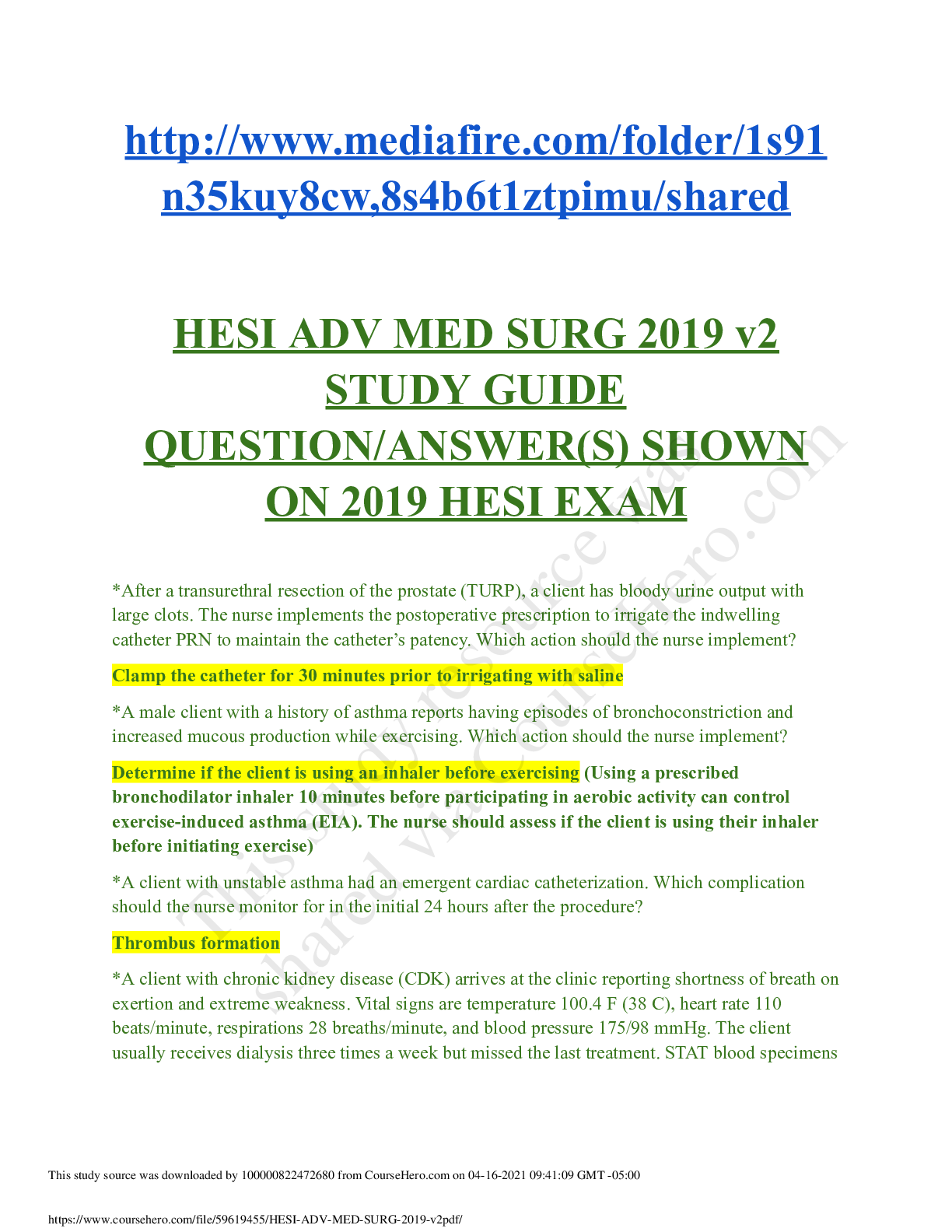
Reviews( 0 )
Document information
Connected school, study & course
About the document
Uploaded On
Apr 16, 2021
Number of pages
9
Written in
Additional information
This document has been written for:
Uploaded
Apr 16, 2021
Downloads
0
Views
44



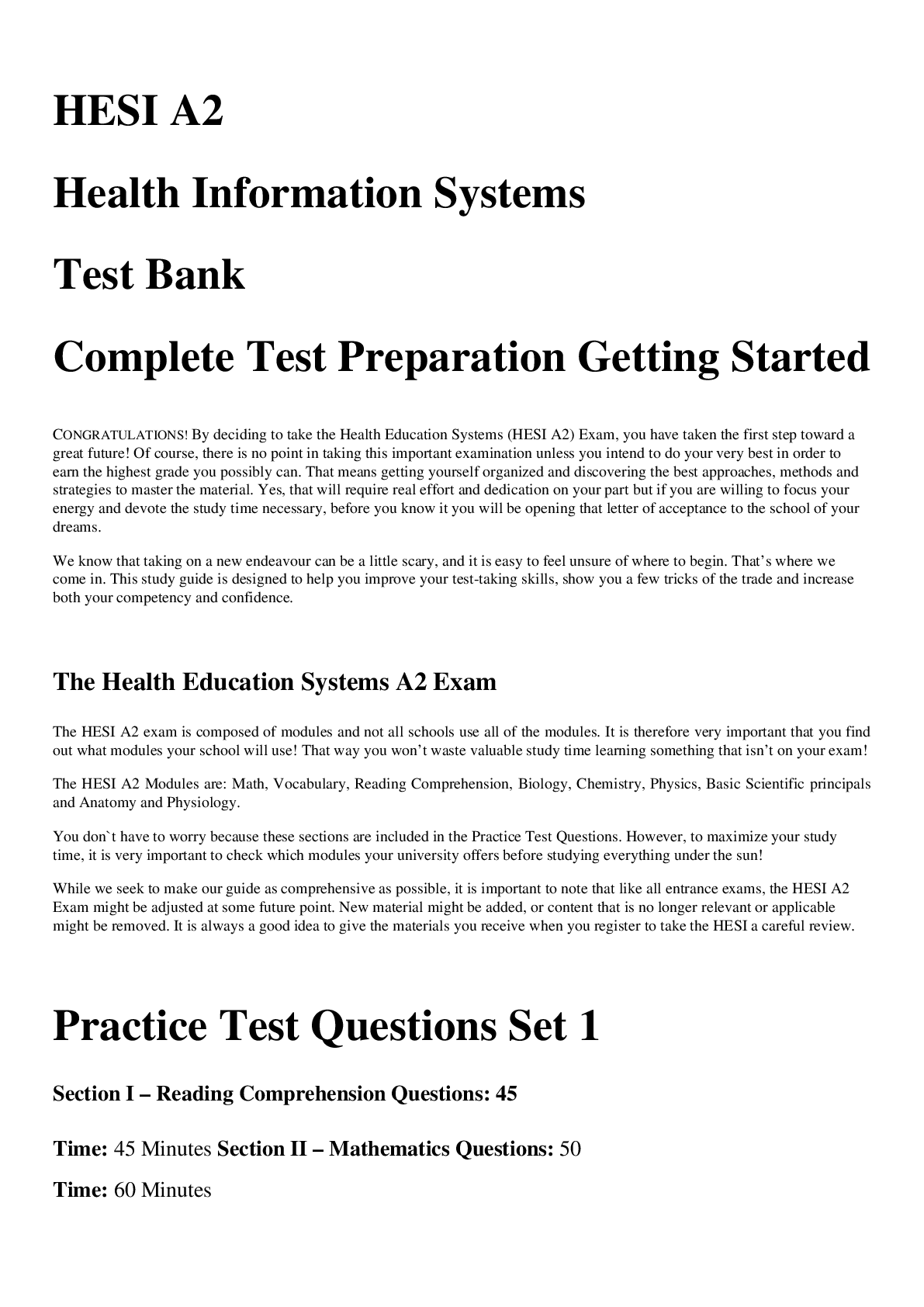
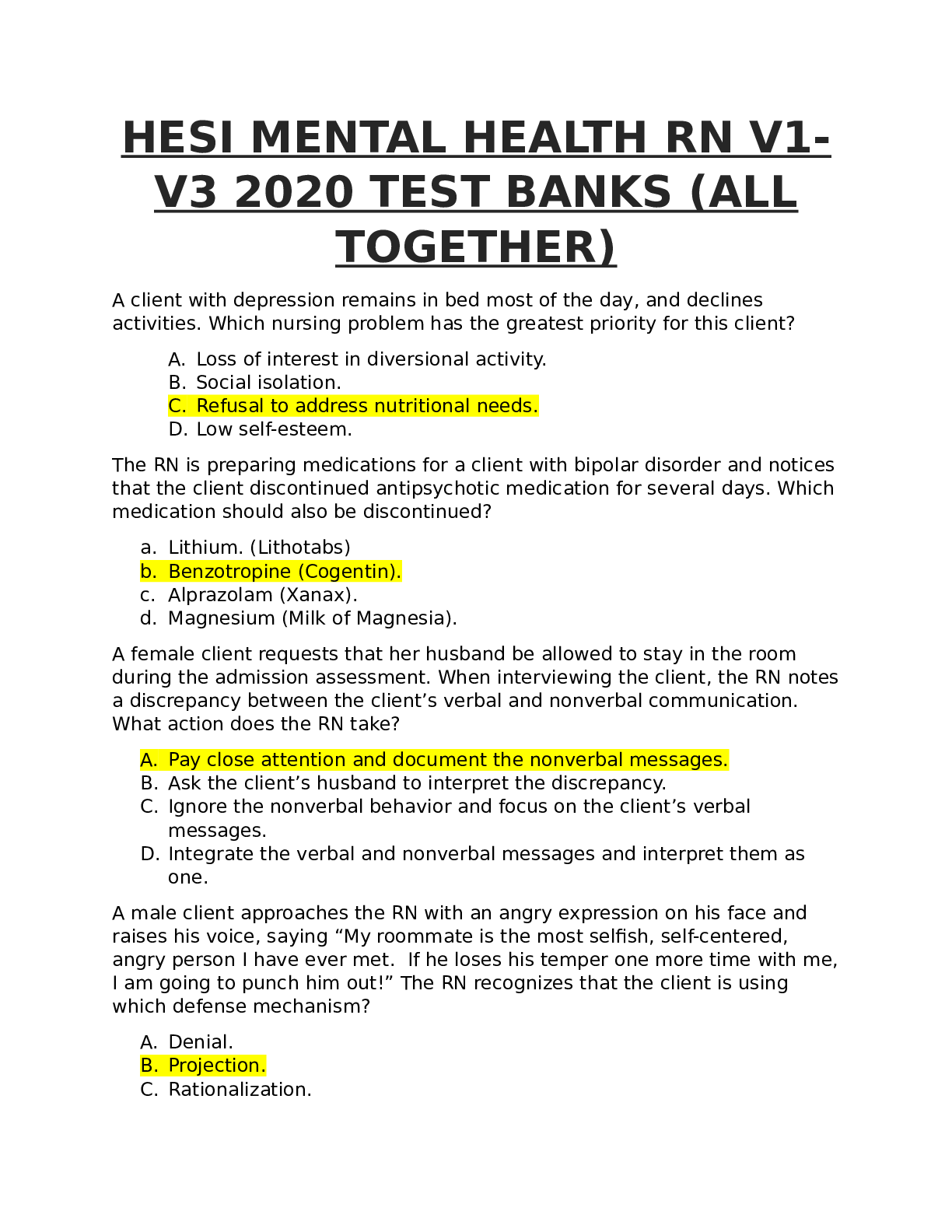



.png)

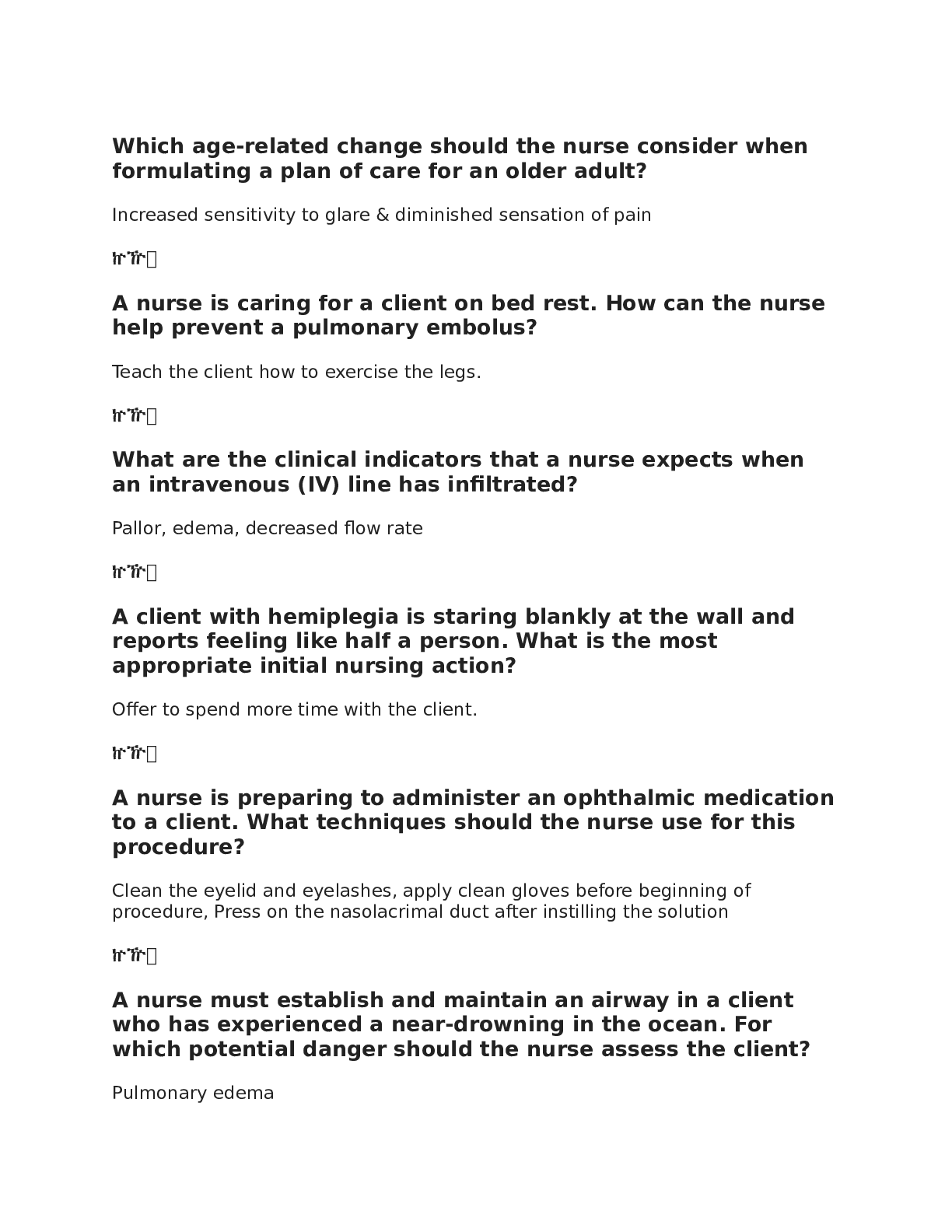
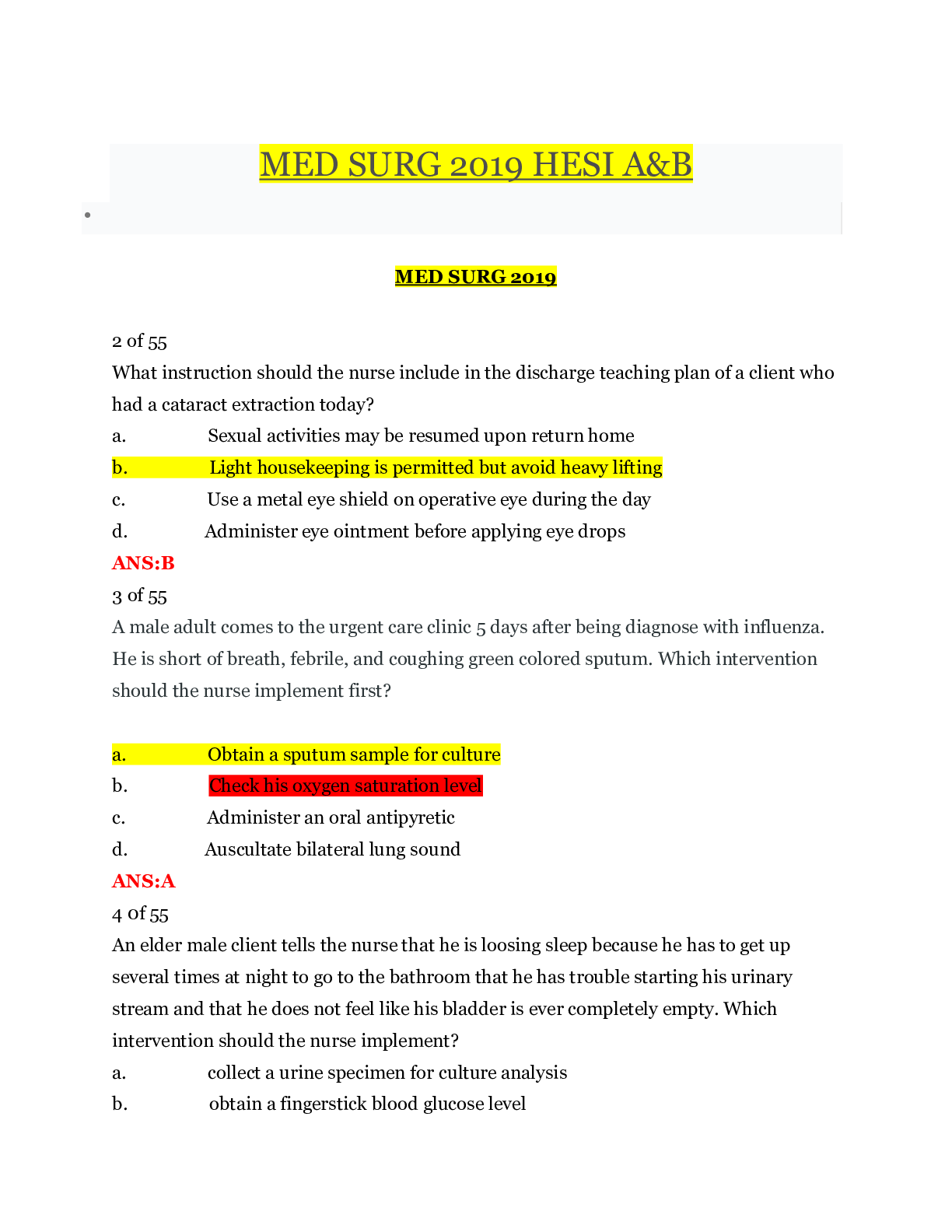
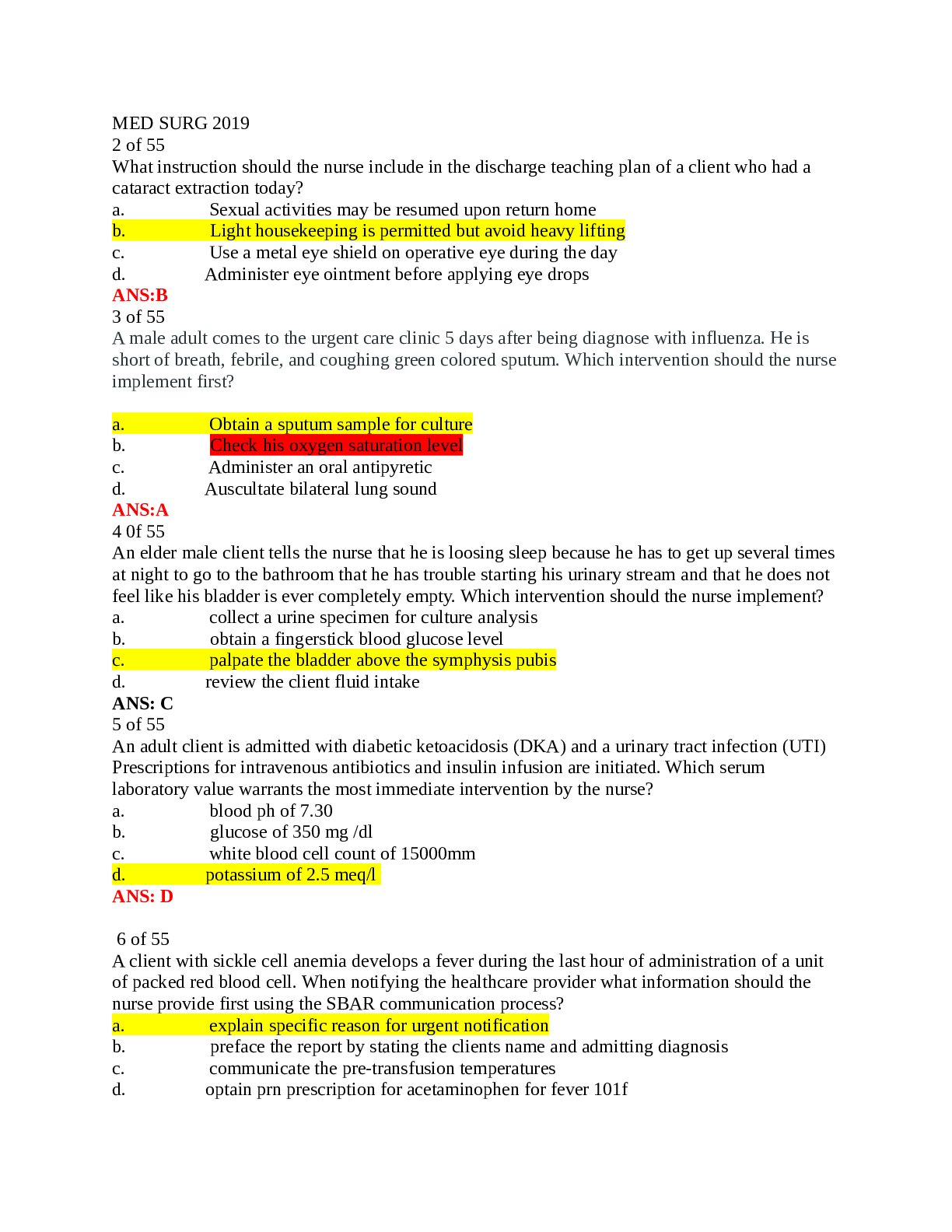

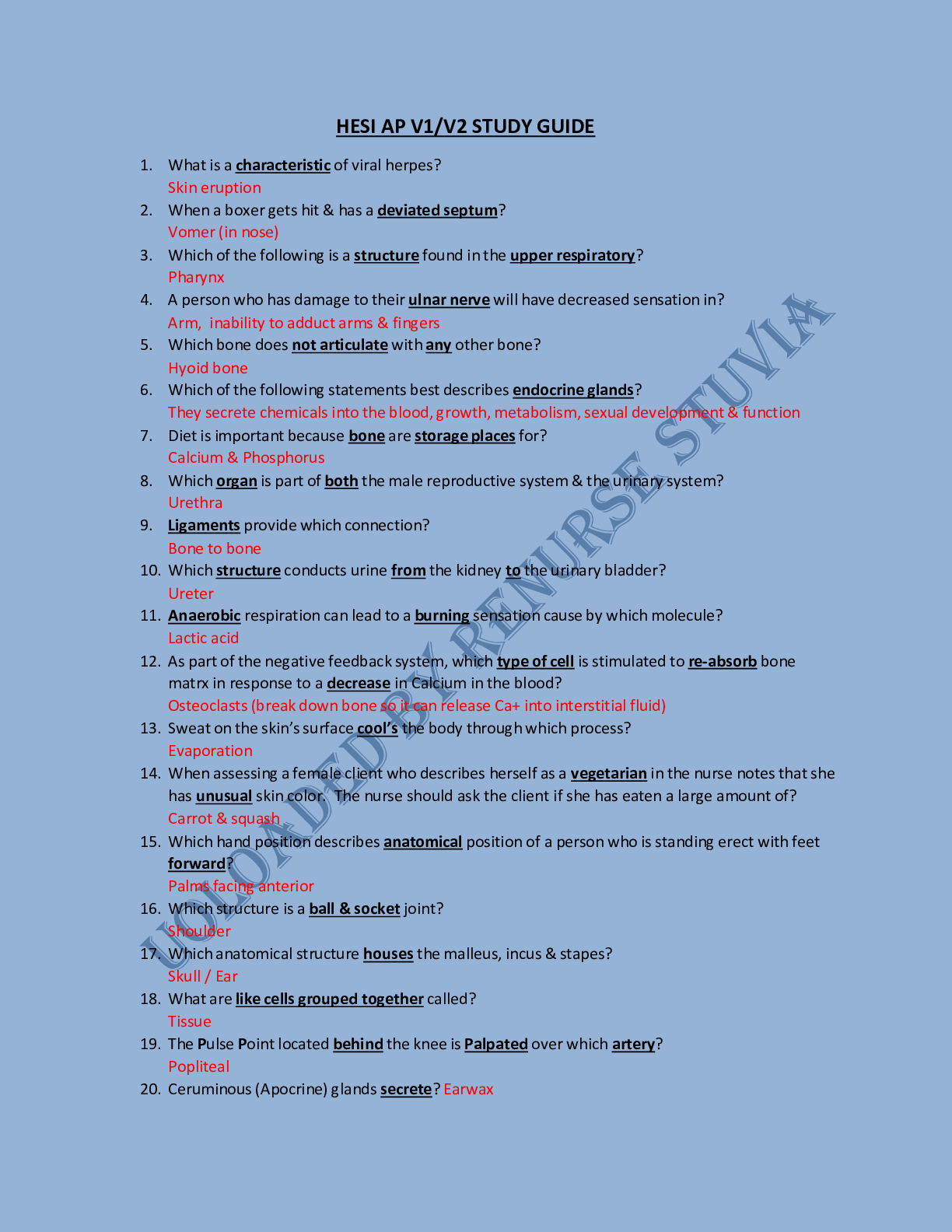




 (1).png)




